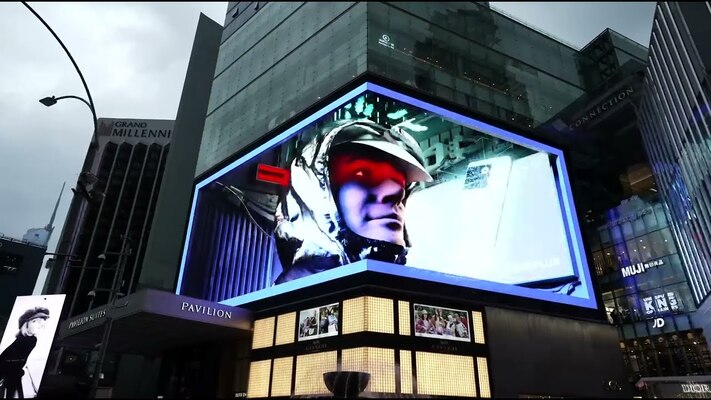The most successful books, films, leaders, eras and generations all have one thing in common – a deeply compelling story, one that involves people emotionally and shapes their beliefs and actions. And the same goes for brands. We marketers need to hold ourselves to that same high standard. We need to ask ourselves: is the story our brand tells interesting?
As a customer, you have to make me care. You have to be clear about what you’re saying, and what you want me to buy into and believe in — well beyond the product or service you are selling. And that’s where a clear master brand narrative comes in, one that is consistent, unites a company’s activities, and connects them deeply to their target audience.
However, when we ask C-suite executives if they are clear on the story their brand is telling, they’ll often just shake their heads and admit that they’re not. To be fair, these leaders are strategising and implementing countless individual initiatives at any given time, all with their own specific KPIs. Unfortunately, this means it doesn’t always ladder up to a compelling overall narrative.
Right now, the need to get your story straight has never been more important. No matter what your story was two months ago, it will need to react to the changed world left behind by Covid-19. The landscape is shifting rapidly, and new winners and losers are being defined. People are going to want more from the brands they choose and the ones that fail to reconnect will not survive.
Finding your story: it all starts with a deep brand dive
The first part of the process is more management consulting than creative. It is a deep dive into the brand and its environment. It’s about understanding the different scenarios, opportunities and implications for the brand’s future. Analytical, research and data-driven, the process comprises four parts.
- Brand archaeology — the brand’s history and truth, important artifacts, symbols or rituals.
- Brand landscape — the environment, the brands it lives among, and their behavior.
- Cultural thermals — the cultural headwinds and tailwinds a brand faces.
- Media conversation — the conversations surrounding the brand, looking for meaningful ways it can participate.
Crafting a brand story
All of this information is used to inform decisions about the brand’s future, and ultimately, identify the classic brand structure elements — idea, purpose and values.
But after years of presenting these brand structures, one thing is clear, they can be hard for people to relate to and understand emotionally. A story has the ability to go much further, connect with people more naturally, and most importantly, to define a brand with the richness that is needed for it to exist in today’s media environment. A complete brand narrative will have a tone, language and look and feel clearly defined. Think of it as the distillation of the brand in its idealised state.
But for our brand stories to meet the challenge of competing with the best books, films and movements in history — we have to bring in the power of high art and seduction. To be truly successful, the narrative you craft must connect people viscerally and move them emotionally. When they close their eyes, they have to be able to see the brand, feel it and taste it. And that can only come from a story.
Getting your story straight
In a post Covid-19 world, the brand landscape, thermals and conversation have all changed dramatically. We must face the reality that our story needs to evolve quickly and precisely in response. In short, it’s time to re-think your story. Embrace it. The process will be inspiring and give new hope and direction. Because after all, in your category and many others, the one with the best story is going to win.
The most successful books, films, leaders, eras and generations all have one thing in common – a deeply compelling story, one that involves people emotionally and shapes their beliefs and actions. And the same goes for brands. We marketers need to hold ourselves to that same high standard. We need to ask ourselves: is the story our brand tells interesting?
As a customer, you have to make me care. You have to be clear about what you’re saying, and what you want me to buy into and believe in — well beyond the product or service you are selling. And that’s where a clear master brand narrative comes in, one that is consistent, unites a company’s activities, and connects them deeply to their target audience.
However, when we ask C-suite executives if they are clear on the story their brand is telling, they’ll often just shake their heads and admit that they’re not. To be fair, these leaders are strategising and implementing countless individual initiatives at any given time, all with their own specific KPIs. Unfortunately, this means it doesn’t always ladder up to a compelling overall narrative.
Right now, the need to get your story straight has never been more important. No matter what your story was two months ago, it will need to react to the changed world left behind by Covid-19. The landscape is shifting rapidly, and new winners and losers are being defined. People are going to want more from the brands they choose and the ones that fail to reconnect will not survive.
Finding your story: it all starts with a deep brand dive
The first part of the process is more management consulting than creative. It is a deep dive into the brand and its environment. It’s about understanding the different scenarios, opportunities and implications for the brand’s future. Analytical, research and data-driven, the process comprises four parts.
- Brand archaeology — the brand’s history and truth, important artifacts, symbols or rituals.
- Brand landscape — the environment, the brands it lives among, and their behavior.
- Cultural thermals — the cultural headwinds and tailwinds a brand faces.
- Media conversation — the conversations surrounding the brand, looking for meaningful ways it can participate.
Crafting a brand story
All of this information is used to inform decisions about the brand’s future, and ultimately, identify the classic brand structure elements — idea, purpose and values.
But after years of presenting these brand structures, one thing is clear, they can be hard for people to relate to and understand emotionally. A story has the ability to go much further, connect with people more naturally, and most importantly, to define a brand with the richness that is needed for it to exist in today’s media environment. A complete brand narrative will have a tone, language and look and feel clearly defined. Think of it as the distillation of the brand in its idealised state.
But for our brand stories to meet the challenge of competing with the best books, films and movements in history — we have to bring in the power of high art and seduction. To be truly successful, the narrative you craft must connect people viscerally and move them emotionally. When they close their eyes, they have to be able to see the brand, feel it and taste it. And that can only come from a story.
Getting your story straight
In a post Covid-19 world, the brand landscape, thermals and conversation have all changed dramatically. We must face the reality that our story needs to evolve quickly and precisely in response. In short, it’s time to re-think your story. Embrace it. The process will be inspiring and give new hope and direction. Because after all, in your category and many others, the one with the best story is going to win.View the article as it originally appeared online here.



